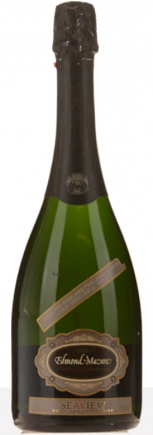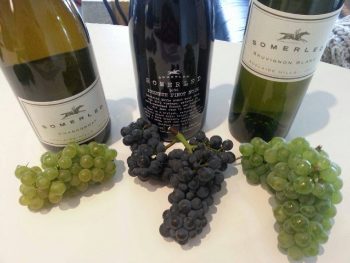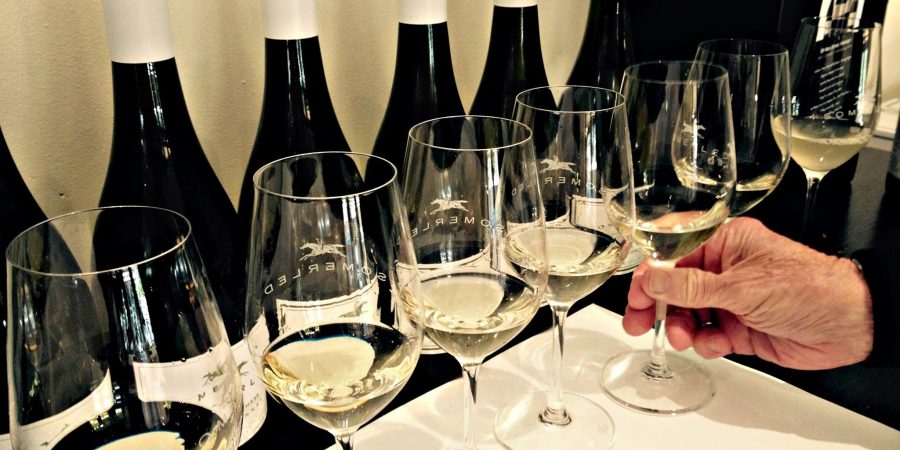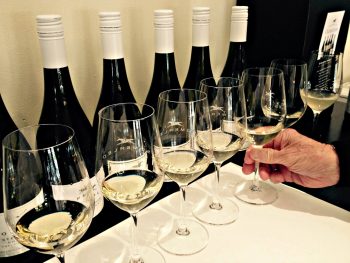Before we start, can I have a quick word?
I hate to say this, but…
I’m a little bit disappointed.
An informative and educational blog delivered to your inbox every week without fail for 175 weeks (yep, it’s been that long!) and not one comment when I failed to deliver for the first time last week???
I could have been seriously injured for all you know?! Or worse?!
Run over by a tractor in the vineyard…
Mobbed by a group of adoring fans at the cellar bar…
Choked on a glass of “someone else’s” wine…?
As unlikely as ALL of those possibilities are, surely at least one of you could have checked in on me!?!
Anyway, you’ll be happy to know that despite the unusual hiatus last week, all is well and we’re back to our regular programming this week.
The truth is, that while I had a break last week, Lucy and Rob were in charge of the blog. And like any good father/daughter team, there was a lot of spirited discussion regarding the content. And let’s just say that the mix of Lucy’s creative flair and Rob’s eye for detail and facts made the whole process a little more time-consuming than usual!
But, here it is (finally!)…
Somerled in the 1980s: Part 1
Rob had never seen a tempranillo in his life. Never mind a nero d’avola. And he distinctly remembers the first NZ sauvie he’s ever tasted (read on to find out about it ..!)
Fortifieds had been the absolute go for years. And the idea of a bottle of wine on the table on a weeknight didn’t really hit town til the early 70s.
And if they did have a wine on their table?
That’d be a claret or a burgundy. Neither of which had to be true to label!
That is, they could contain anything deemed appropriate. A claret in general may have erred on the more savoury, elegant side, and a burgundy on the bigger, richer and softer side.
But as a side note, dad remembers that their Grange was entered into a 1970s wine show in both the claret and the burgundy classes – and guess what, it won the trophy in both!
The 1980s saw a huge growth in the production of table wines (and the further dwindling of fortifieds), the beginnings of wine being labelled according to variety, and some very new varieties (what’s pinot?) being experimented with!
So what would Somerled have looked like in the 1980s?
{Disclaimer: all information below sourced from Rob’s memory and interpreted by Rob and Lucy over a Somerled Chardonnay}
1980s Sparkling
 Well, the vibe I’m getting from dad is that the sparkling of the time “wasn’t bad“.
Well, the vibe I’m getting from dad is that the sparkling of the time “wasn’t bad“.
He describes the Seaview Edmond Mazure as a “beautiful, sophisticated sparkling”. It was made from pinot noir and chardonnay (pretty cutting edge for the 80s) and he rates it very highly.
And the standard, high volume Seaview Brut de Brut was pretty good at the time as well.
So that’s two …
In general?
“The Minchinbury and Great Western sparklings were nice plain delicate wines, but not very exciting”.
Why?
Today we use pinot noir and chardonnay as our base wines for sparkling, but then the approach was it really could be any varietal, as long as it was picked early.
This created a certain blandness that can’t really be improved with winemaking.
Rob thinks if he was making a Somerled Sparkling back then, knowing only what he knew then, his approach would still be to find some high-quality pinot noir (which was hard to come by in the 80s) and make a 100% pinot sparkling as he does now, in the traditional method.
Strangely, 40 years ago, his sparkling would probably have tasted much the same as it does now!
1980s Sauvignon Blanc
Dad remembers the first New Zealand Sauvie he saw – it won the best in its class at the Canberra Wine Show in 1982!
Such a vivid memory:
Any sauvignon blanc Australia was producing at the time had nothing like that incredible character.
Consumers couldn’t help but take notice of the New Zealand sauvignon blancs – they just jumped out of the glass.
Australia had bits and pieces of sauvignon blanc around but it wasn’t regarded as being a variety you’d promote.
I remember the Hazelmere Sauvignon Blanc though – I think it was at least 14g/litre residual sugar! That’s about as big as a Somerled Shiraz.
We did have a McLaren Vale patch of sauvignon blanc near the Seaview Winery. It took a bit for us (Wynns Seaview Group) to convince the marketers it was worth even promoting as a sauvignon blanc! When it hit the market, nothing much happened, as nobody really knew how to approach it. It was similar to what we make now but much bigger and richer.
We would look at the fruit a lot during the growing season and see it getting more and more flavoursome which we thought was great – so we’d pick it late, but with obvious problems:
The resulting wine becomes very pungent and overpowering at that ripeness, and the palate gets sick of it very quickly.
When the juice was in the fermenters, the aromas and flavours were so incredible I was keen to stop the fermentation early! We would never have done it of course – it was still at 30g/litre residual sugar (compared with the 1g that Somerled sauvign blanc has).
So when it did become sugar dry, it became hot and hard and had lost its lovely softness due to the alcohol.
It didn’t occur to us that we should just pick it at 11 beaume!
1980s Chardonnay
 Well, Heather would be most displeased.
Well, Heather would be most displeased.
Just like with the sauvies of the time, the approach was:
“What do we do with this strange, new-to-us variety?” “How do we get the best out of it?”
And the fruit was left on the vine a lot longer than we would dream of today, to try to eek out everything the variety had to offer.
“We made some big wines then from Coonawarra – chasing flavour depth meant picking riper than we do now. That meant higher alcohols and it was this that people tired of, although high oak levels got the blame.
We did not allow wines to go through malolactic fermentation, as riper fruit meant already lower acid and malo would make acids even lower.
So Somerled then would have been a deeper colour, richer and a very full, mouth-filling wine”.
Would dad have matched that big wine with some big new oak too? Here I am giving 80s oak the blame again…
“Yes! We were so impressed with the richness and density of these wines – and we loved drinking them. They sold really well, and it was a few years before people really started to tire of this style”
Very illuminating!
And as dad and I were musing yesterday, the wine industry doesn’t get heaps of credit for the way in which it has developed and refined over the past 50 years – and adapted beautifully to all of these new varieties landing on our shores!
No doubt we would have all adored the Somerled vintages of the 1980s had there been some. But we’re more than content with our 2020s style as it is! And as it is evolving, too.
That’s probably enough for now. We’ll revisit this topic over the coming weeks with a look at Rosé and red varieties. Stay tuned!


Hi Maree,
Glad you didn’t get too mobbed by adoring fans at the cellar bar, although it’s a distinct possibility 😉
This was a great read thanks to you and contributors.
Thanks
Bob
I thought we agreed that we were calling it *artistic differences*!?!!!
A word of thanks to Maree who rolls out these blogs with such elegance every single week – I now know how hard that is! Especially with fact checkers around *sigh*.
I just thought you were having a well deserved break.
Froggy
Thanks Froggy! It was nice to have a week off, but happy to be back on deck now. And lovely to see you last night!
You say “artistic differences”, I say “spirited discussions”!! 😀
Ha! Thanks Bob 🙂
Maree!
Sorry I missed last week…. been in lockdown here in Melbourne since the beginning of the month and quite honestly have lost track of what day it is – needless to say have opened a few bottles from my Somerled stash since I have been here…. anyway – so sorry to have missed the missing blog…. and thanks for the fascinating read for this week…. Cheers hic Kymmie and Sami Bear xx
You’re forgiven Kymmie! I just wanted to see who was paying attention 🙂
Hope all is well in Melbourne. We miss you! xx